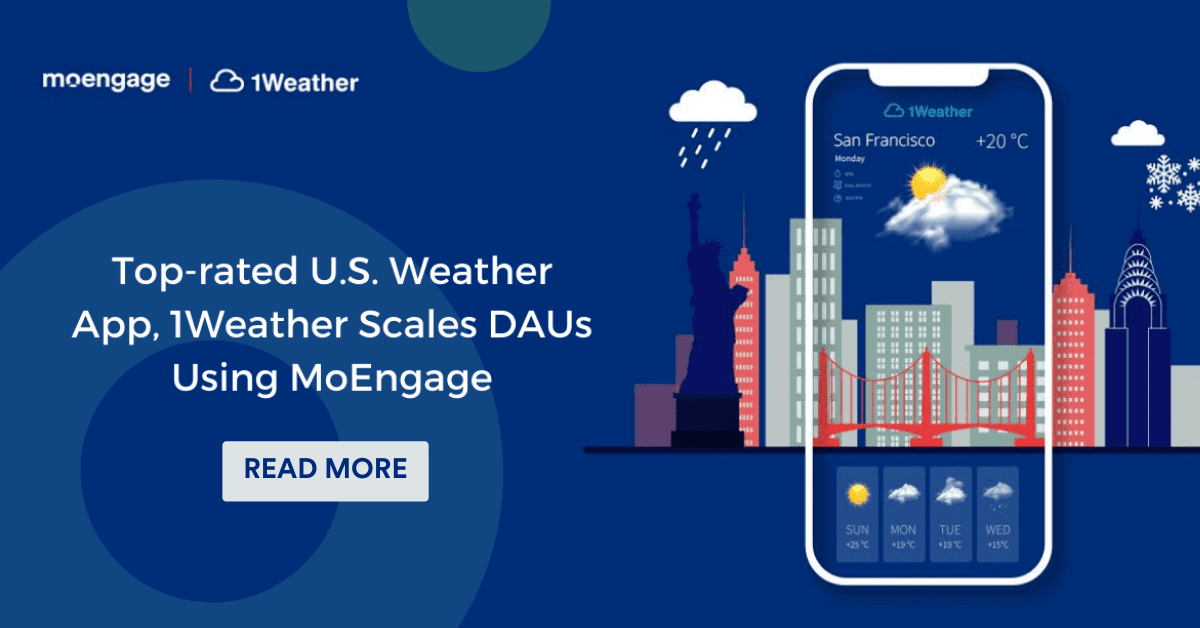An In-Depth Guide to Customer Lifecycle Marketing Campaigns
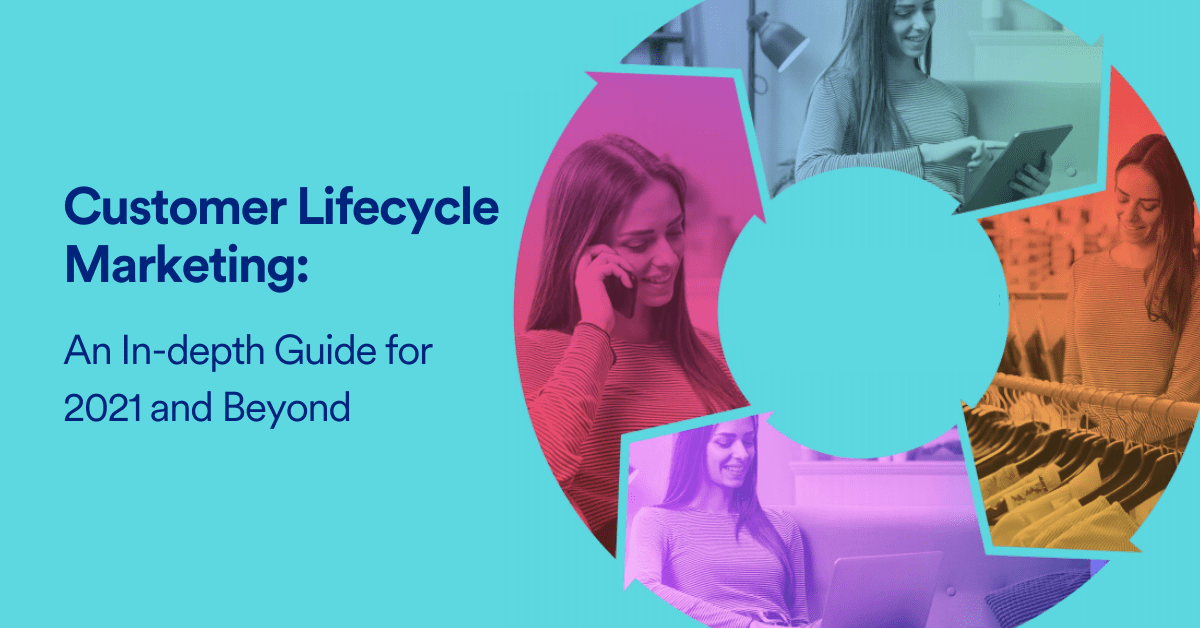
Reading Time: 6 minutes
Have you always imagined having a strategy that can help you win new customers and bring existing ones back? Well, customer lifecycle marketing is one such surefire strategy.
Customer lifecycle marketing is a coordinated marketing effort that touches every phase of the customer’s journey. The aim of this strategy is to help you win new customers while retaining existing ones. It involves 4 phases:
Reach > Act > Convert > Engage
At each phase of the cycle, you approach the customer using specific channels and specific marketing messages.
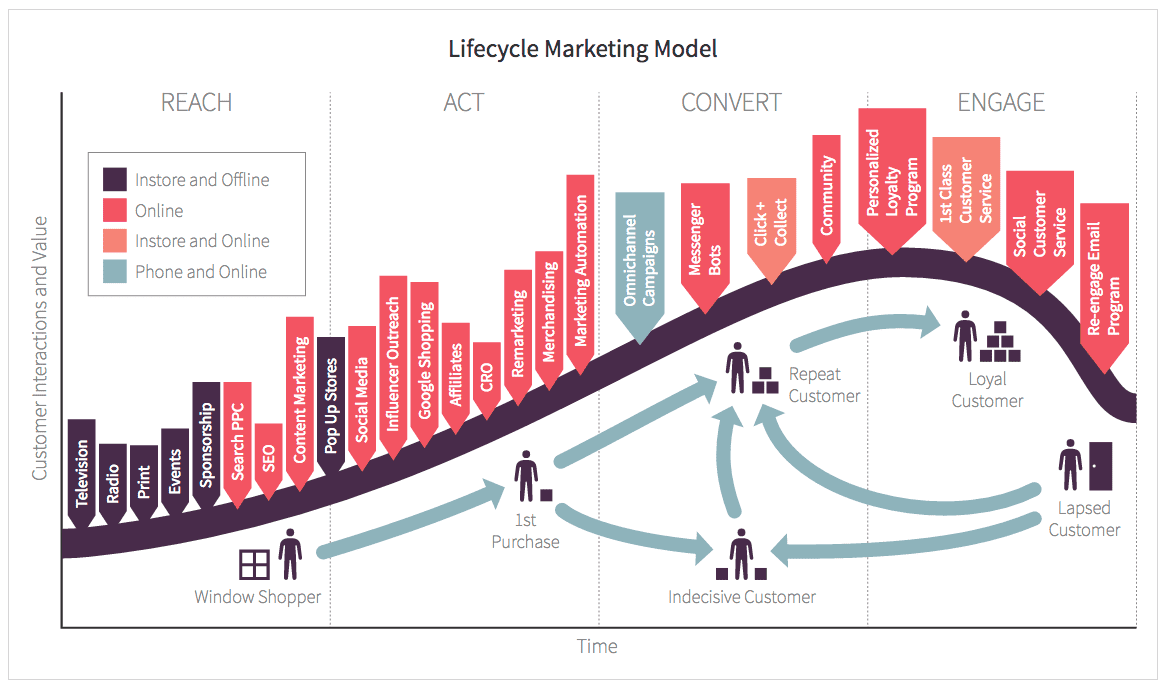
A deep dive into the key phases of customer lifecycle marketing:
Reach The first phase is also called the ‘discovery’ or ‘awareness’ phase. During this phase, your customer (or prospect) comes in contact with the business. This can happen through several online, offline, or in-store mediums like television advertisements, online searches, cold emails, events, etc.
Act During the ‘act’ phase is when the customer acquires the first product or service from the brand. All the information and experience should prompt him/ her towards a sale. This is when marketers use advanced marketing tactics like remarketing, personalized messaging, affiliate marketing, etc. to enhance awareness and prompt decision-making.
For example, A free-shipping coupon for the first online sale is sent via email to the customer. When the customer uses the coupon to complete the order, the Act phase is complete.
Convert Conversion is a critical stage in customer lifecycle marketing, as it turns a one-time prospect into a paying customer. Studies prove that new customer acquisition costs 5x when compared to retention. Ideally, marketers need to use personalized strategies such as omnichannel marketing and conversational commerce at this stage.
For example, A customer makes an online sale for shoes after looking at a buying guide published by the brand. He/ she then collects their purchase in-store without paying any extra fees or charges.
Engage Engaging the customer is the last leg of customer lifecycle marketing, which aims to turn existing customers into brand advocates. Loyal customers receive hyper-personalized shopping experiences and priority services such as personal assistants. Companies also use marketing channels like SMS, email, and mobile to retain customers.
For example, A customer service call to collect feedback to improve service that will elevate individual user experience.
| Bonus Content
👉 Customer Lifecycle Marketing Campaigns: An In-depth Guide for 2021 [Download Ebook] |
Customer lifecycle marketing metrics that you should keep an eye on
In marketing as well as in sales, there are hundreds of metrics that tell businesses what to do and what the red flags are. However, in customer lifecycle marketing three key metrics matter the most. These metrics show if your efforts are invested in the right direction. These three metrics are:
User activation rate (Total customers / Total users) * 100
Repeat customer rate (Total repeat customers / Total customers) * 100
Loyal customer rate (Total loyal customers / Total repeat customers) * 100
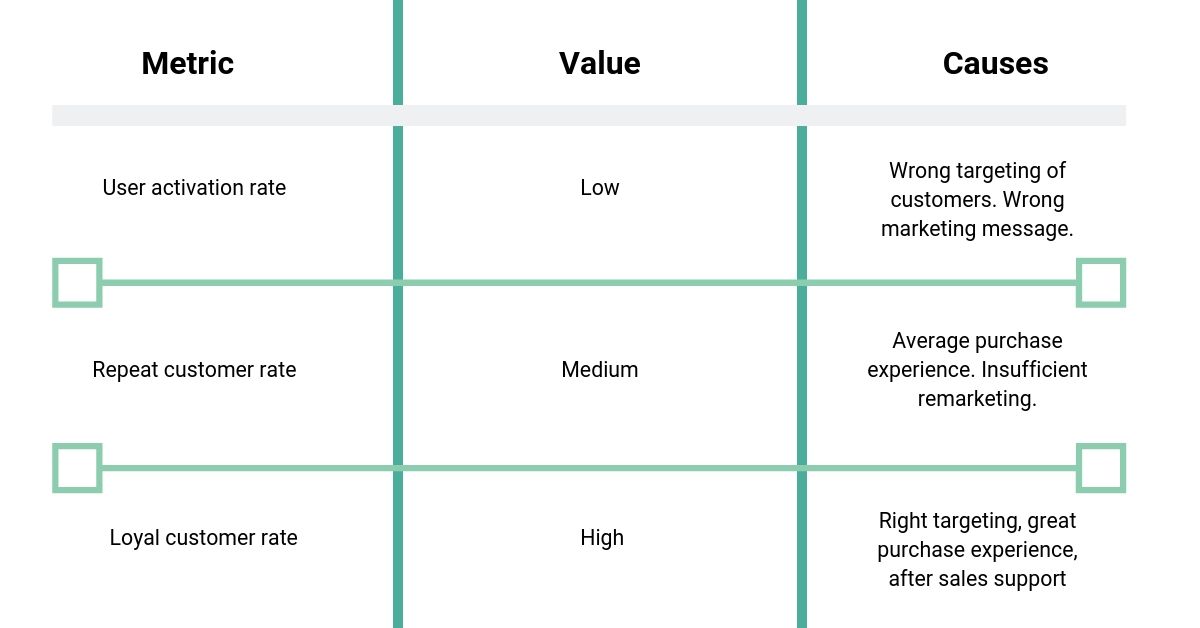
Depending on the health of the metrics, marketers must make course corrections. It’s important to ensure that you don’t fall into the pitfalls of lifecycle marketing while trying to improve the metrics. Let’s explore those below:
Pitfalls Vs. Best Practices
Pitfall: Poor segmentation. Best practice: Data-driven segmentation
Every customer segment has different preferences and expectations. Poor segmentation leads to scattered marketing messaging that may not bring in the ROI.
The need of the hour is data-driven segmentation. Lean on data to identify subsets of users who show similar trends in consumption and loyalty. Don’t stick to existing stereotypes of age and gender alone. Also, identify more segments based on demand, price, brand specifications, etc.
Pitfall: Sending repetitive offers. Best practice: Send contextually relevant offers
Offers, loyalty programs, promo codes, etc., to help in customer engagement. Repetitive offers can result in declining engagement rates for your campaigns.
Enrich your marketing campaigns with relevant offers, and use attributes like recent browsing history and wishlists to design these offers. Such relevant offers will help build customers’ loyalty.
Pitfall: Lack of personalization. Best practice: Proactive personalization
What’s challenging with the customer lifecycle marketing approach is that you have to cater to new prospects as well as existing customers at the same time. This makes personalizing the buying experience a complex one.
You can still personalize specific parts of the lifecycle to engage your customers. For instance, emails or SMSes should address the customer by name. A personal callout with a targeted offer can help convert indecisive customers.
Our success story: 1Weather reduces churn and grows app stickiness with lifecycle marketing
1Weather is one of the top-rated weather apps for Android on the Google Play Store that provides real-time local weather predictions. This mobile app offers weather information and forecasts for locations worldwide along with severe weather alerts and reports for specific locations in the U.S.
There are more than 8 million active users, of which 95% are from the U.S., and use the app to get daily weather predictions even when they are on the move.
As a utility app, 1Weather followed the primary best practices of user engagement through regular weather updates and predictions on their app. While this engagement plan worked well in bringing users back to the mobile app, it did not cover the re-engagement of users in a regular manner.
As a result, the brand observed lower page sessions within the app. They wanted to ensure that users are able to benefit from 1Weather’s accurate weather information and forecasts in a regular manner through the mobile apps.
1Weather wanted a scalable solution that would make it easy to onboard, engage, and retain their users.
Being a utility app, 1Weather was not allowed to access a user’s Personal Identification Information (PII), such as email, phone number, and other information. However, they did have access to the user’s location and weather search history based on approvals provided by the user. 1Weather already had the default user location on each user’s mobile phone, but they were also able to capture user event data, which included location data that was either searched for or added later by the user on the app.
The brand’s marketing team was able to leverage this massive amount of location data from nearly 8 million users. The data was ingested into the MoEngage platform and analyzed using MoEngage Analytics, and the insights derived were used to create niche user segments based on their current stage in the lifecycle. These segments were:
- Active users who had opened the mobile app and/or performed activity on the app in the last 30 days.
- Inactive users who had NOT performed any activity or opened the app in the last 30 days.
The team utilized these newly segmented groups to dynamically map personalized user communication campaigns. The objective was to send the right weather notifications to users at the right moment with the right messaging. This messaging could be personalized based on the user location.

Once the personalized campaigns were active, 1Weather began measuring the level of ‘user activeness’ on the app. The marketing team already knew each user’s default city but wanted to monitor and add more cities to the current user segment based on their weather searches and manually added cities. To get a deeper view, the team divided the user data into different cohorts:
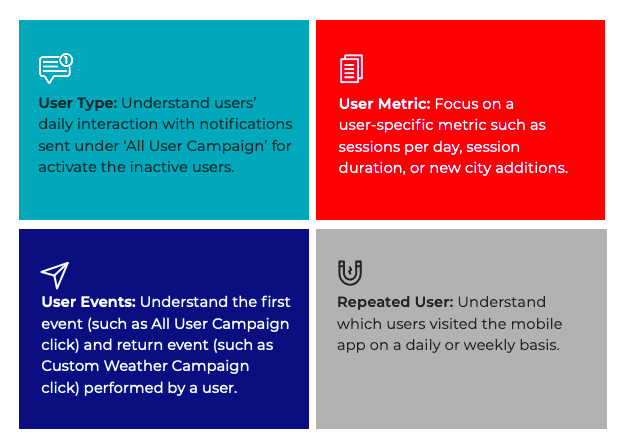
These cohorts helped the team recognize the correlation between various users, their activity, and their locations apart from the default city. The team was able to run more state- and city-specific weather campaigns for various users.
These lifecycle marketing campaigns eventually helped 1Weather engage and retain their mobile app users. The brand saw:
- 25 million incremental mobile app opens
- 20% boost in the depth of sessions
To learn how other brands like yours use MoEngage to streamline their customer lifecycle marketing campaigns, click here.
Bringing it all together
David Ogilvy, the advertising titan once said, “You cannot bore people into buying your product; you can only interest them in buying it.”
Customer lifecycle marketing takes care of invoking interest in your customers and turning them into loyal customers right from the first contact. If done right, it can multiply your omnichannel revenue without incurring additional costs. To do it effectively, you need a smart tool by your side as well.









